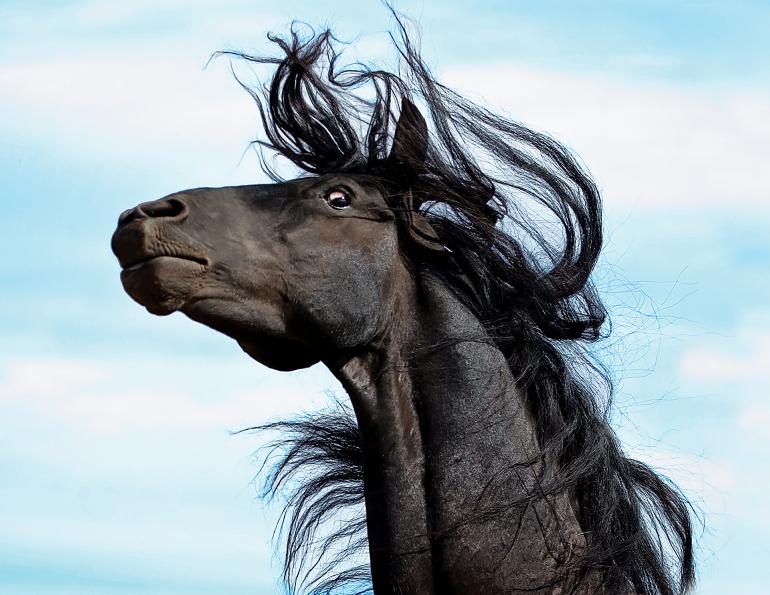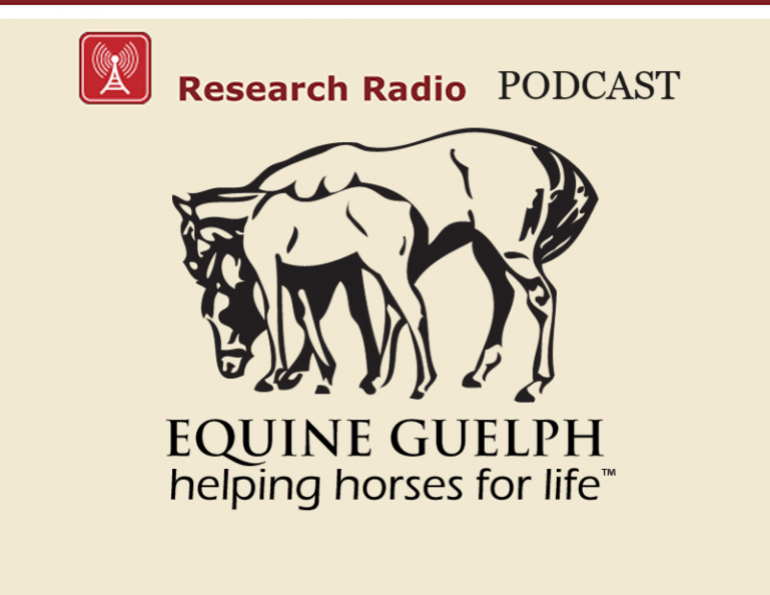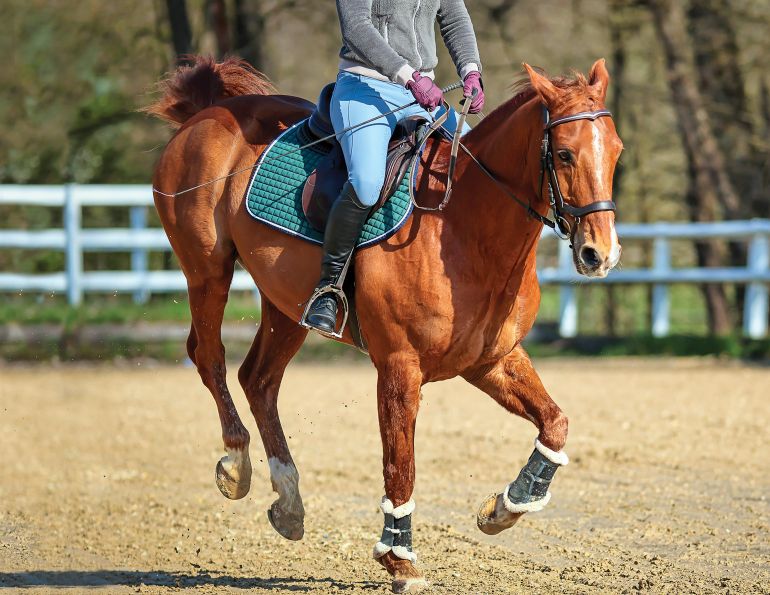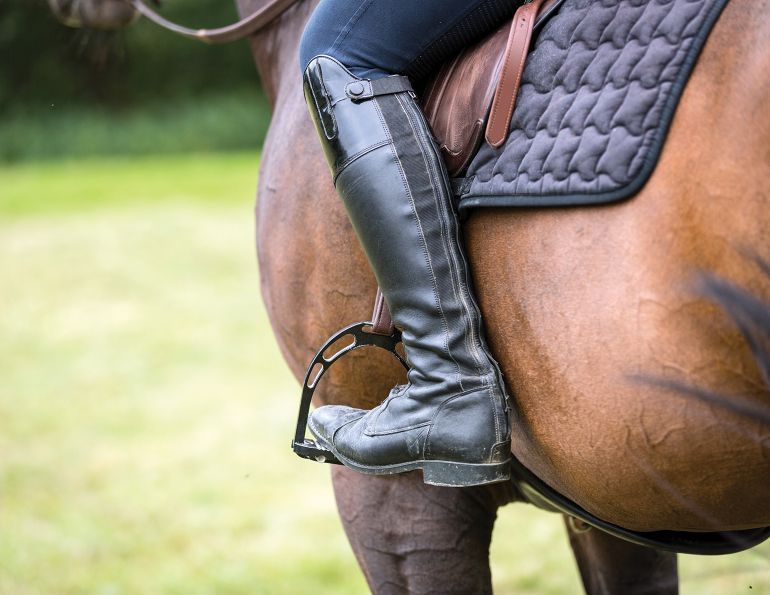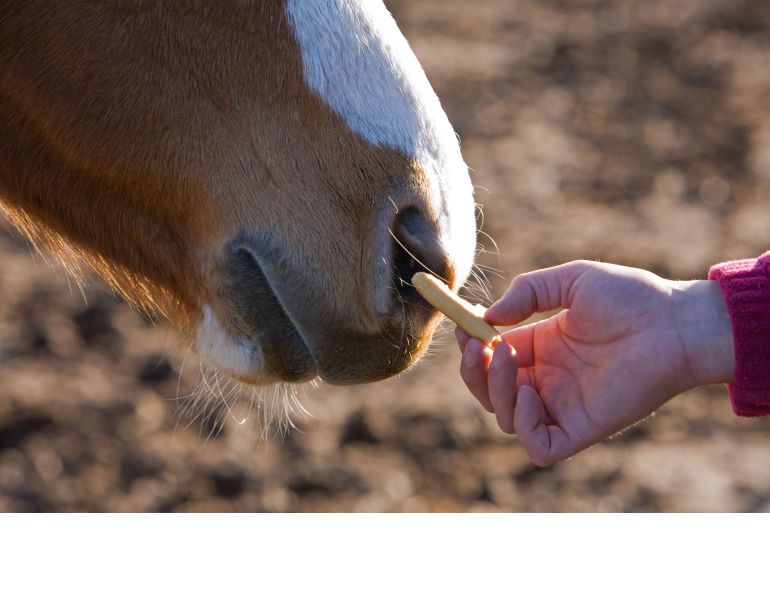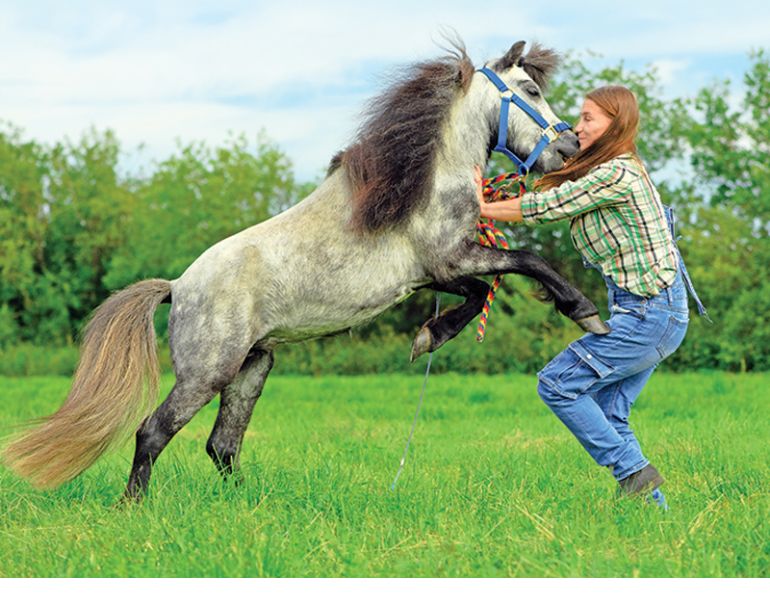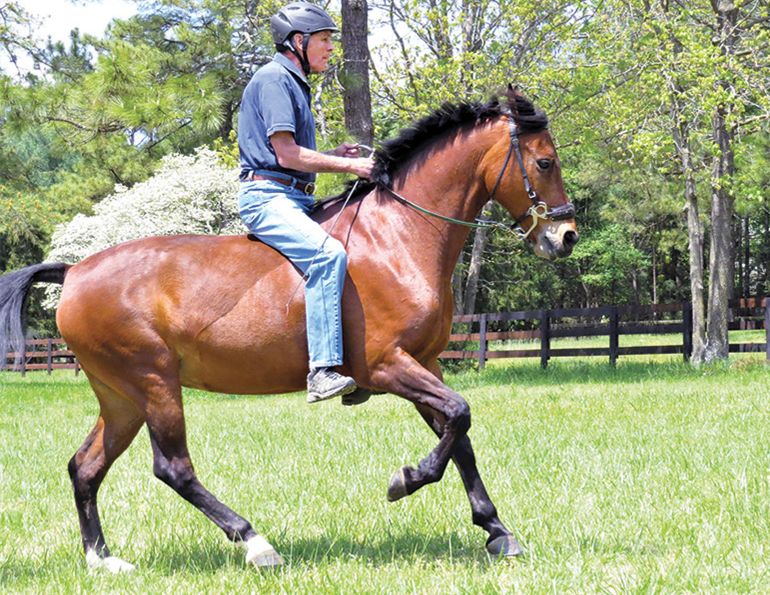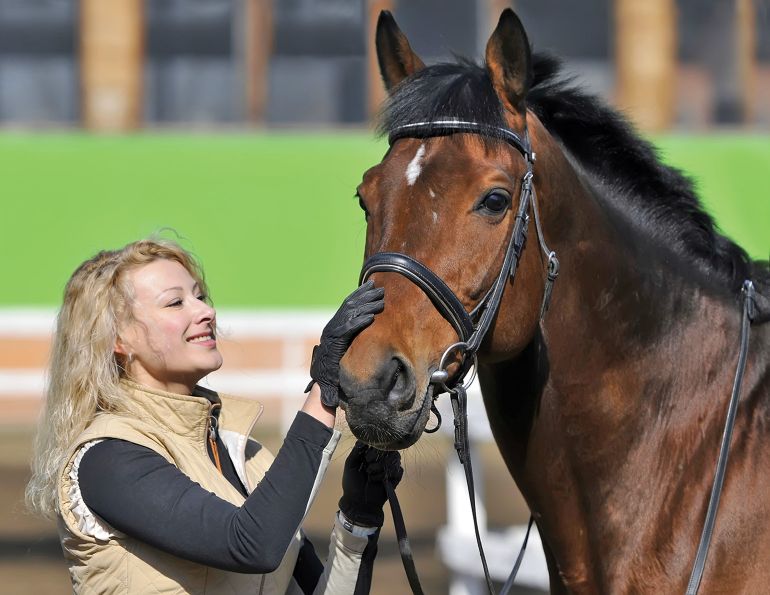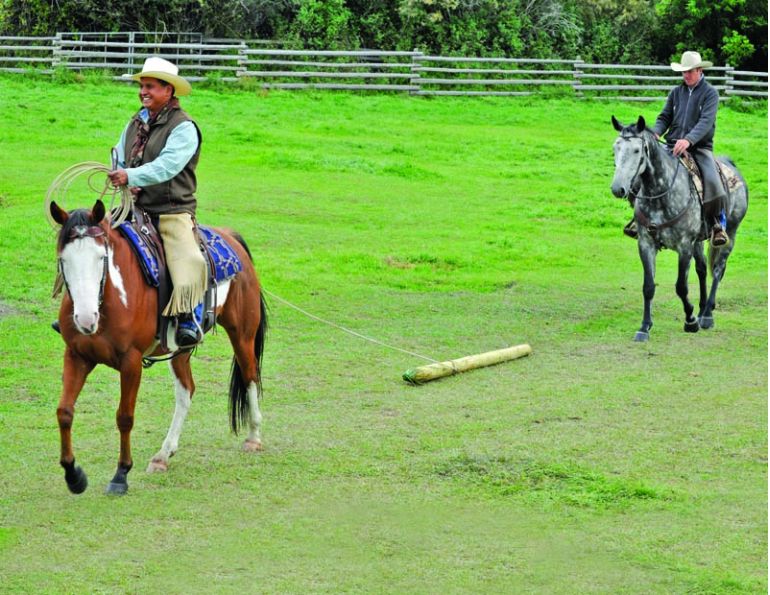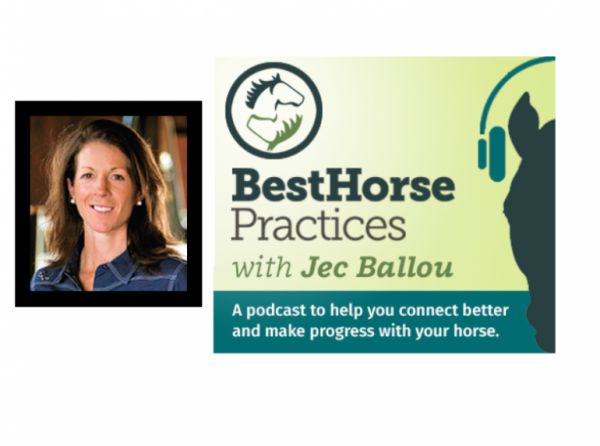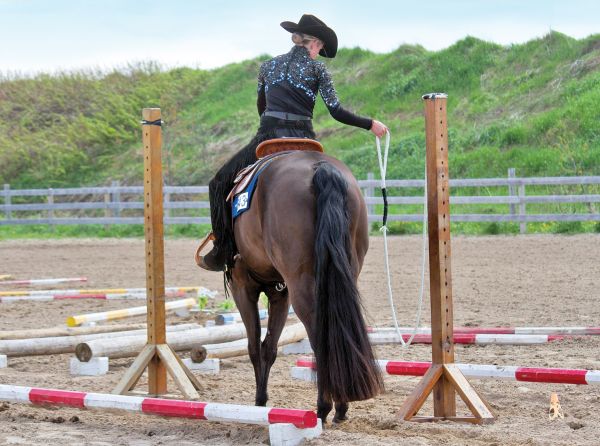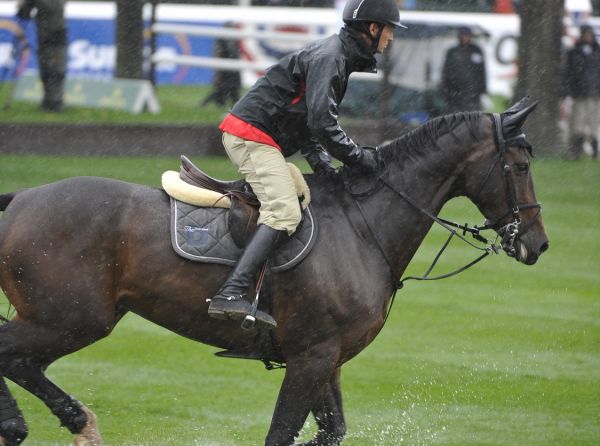By Alexa Linton, Equine Sports Therapist
A closer look at the troubling physiology behind this common practice and how to support curiosity and courage in our horses instead.
Now that I’m celebrating my 20th year with my mare, Diva, when I look back at our horsemanship journey, I feel guilt and shame over some of my actions. On reflection, many of those actions related to the belief that Diva needed to be “desensitized” to things in the human world, and to the way I went about doing this.
“Desensitization” is defined in the Merriam-Webster dictionary as: to make emotionally insensitive or callous; specifically: to extinguish an emotional response (as of fear, anxiety, or guilt) to stimuli that formerly induced it.
Related: Restarting Halo, Part 1 with Jonathan Field
I’ve done a lot of inner work and self-forgiveness around what I see now through a more informed lens as hyper-stimulating, forceful, and often abusive treatment in the name of making my horse do all the things I wanted. I know that acclimatizing our horses to the human world is important, but there are ways to achieve this goal that prioritize connection and relationship above all. This article describes my shift in perspective and way of training, and I dedicate it to Diva and her infinite patience with this slow-to-learn human.

Asking the driver to slow down and pass wide, this rider gives her confident horse the opportunity to remain calm and curious as he observes the approaching truck. Photo: Shutterstock/Chelle129
I consider Diva to be a sensitive horse, which is not surprising because I’m her person. Since she arrived in my life at age four, she has been worried about new, novel, weird-sounding, and weird-looking things. Whether cars, bicycles, dirt bikes, tractors, leaves, flags or tarps, her instinct is to go away from the stimulus and not engage — and in the case of what she considers very scary things, to flee. Unfortunately for her, I wanted to explore and do lots of stuff, which meant facing those scary things and in addition, I was about as patient as a gnat and expected her to be on my often-rushed schedule.
For a long time, my answer to her sensitivity was what many of us have been taught — desensitization in the form of forcing her to deal with the scary thing or making her “get over it” through whatever means necessary. The means often involved no choice or time for integration on her part. As with many things with horses, I expected her to be on my schedule. I recall spending hours walking her around an excavator or tractor to “desensitize” her, despite how stressed she was and how much she wanted to leave. Or crossing a creek time and time again, even though she wasn’t relaxed or happy about it. At the time, I was part of a trail riding club, and my goal was to keep up and not get injured in the process. This meant exposure to many scary things and rarely enough time to allow Diva to process and fully integrate. Ironically, at the time I thought I was building trust and connection. Now I understand that I was in fact forcing her to resort to any means necessary to cope. It makes me feel slightly ill to share this, but it feels important to open up. I was doing what I had been taught and what I thought was helpful. Now I am thankful to know better.
Related: How to Load a Horse into a Trailer
Too often, desensitization is based on pressure and impatience of the human, all while not paying close attention to the state of the horse or attempts on the horse’s part to say no or express concern. We often perceive stress behaviours as disobedience or evasion rather than anxiety or fear, and use escalating pressure when what is really needed is empathy, presence, and time. It makes sense in some ways as many humans use this same tactic when anxious or scared, forcing themselves into a scenario that doesn’t feel safe or being pressured into something because saying no doesn’t seem to be an option. In reality, relaxation and curiosity cannot be created through these methods, and over time they can shut down the horse’s nervous system and the horse will be traumatized, or more challenged rather than less, by external stimuli.

A patient, no-pressure approach to walking over a tarp allows the horse to stay in a state of curiosity and learning. Photo: Clix Photography
I remember when this knowledge sunk in several years ago after some extensive work on my own nervous system. I was watching a trainer work with a horse over an obstacle, and I felt and plainly saw that the horse was scared. When the increasingly stressed horse finally went over the obstacle, which required a high level of pressure, it did not seem more relaxed about the achievement. Instead, the horse displayed increasingly frequent calming signals like licking and chewing, shaking and blowing. These I had started to understand (thanks to the work of Rachaël Draaisma, author of Language Signs & Calming Signals of Horses), were not a sign of comprehension and learning, but of the horse attempting to communicate its very real level of distress and desire to be free from the situation.
When considering how the mammalian autonomic nervous systems work, the way many of us desensitize horses is a recipe for stress and disconnection, whether that manifests internally as a digestive or a structural issue, or externally as a flight response as it did in Diva. There are a few concepts that are essential to understanding the nervous system and if you’d like to learn more, I highly recommend the work of Sarah Schlote.
Related: Trail Tips: The Pushy Horse
Related: Get Your Horse on a Track System
First, traditional desensitization is based on the psychological concept of flooding, or adding certain fearful stimuli in high and frequent doses. The horse cannot escape through flight, fight, or freeze so they eventually move into a state of relative calmness. We can think of the outcome of flooding as learned helplessness, defined as “a state that occurs after a person (or horse) has experienced a stressful situation repeatedly. They believe that they are unable to control or change the situation, so they do not try, even when opportunities for change are available.” In short, it is a trauma response. The physiological state is akin to when a prey animal is captured by a predator and exhausts all options for escape — the resulting calm state is a physiological strategy found in all mammals for reducing pain and suffering during their dying process. The term “broke horse” historically refers to this state and trainers routinely used tying up and laying down in their initial training, because it mimics the dying process and elicits this physiological response. The heartbreaking truth about this kind of training is that your connection to your horse and their trust in you, and even their spirit, is sacrificed for the outcome of a “calm” and “bomb-proof” horse. Here’s the good news — it’s absolutely possible to have a horse that is well-acclimatized to and even curious about “scary” things in their environment and has a great relationship with the humans in their lives. In fact, if you want a horse that truly takes care of you when the rubber hits the road, you need both connection and confidence. Enter my horse, Raven.
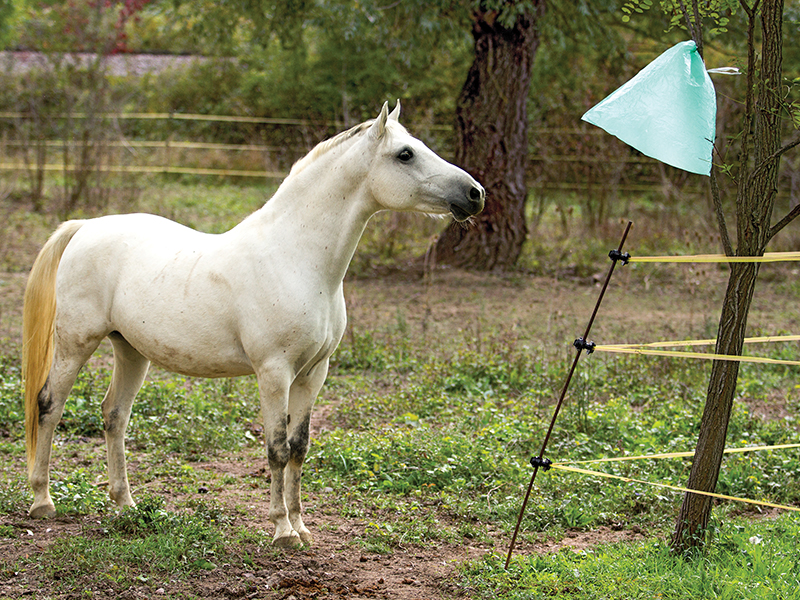
This curious horse is learning about plastic bags — on his own terms. Photo: iStock/NastjaPungracic
Raven goes towards new things. She is deeply curious and wants to smell and touch everything. Take a tractor into her field and she immediately goes up to it and starts exploring. She entered my life when I was changing my training style and had begun incorporating clicker training, target work, and Freedom Based Training (with Elsa Sinclair). She was also started slowly by someone who incorporated play and adventure into her training style. From her lineage, I know that her sire is as chill a fellow as you can find. However, if I add too much too soon, flooding her system with something new and scary, Raven still has a natural and understandable fear response because she is a prey animal. Just like all horses and all humans, titrating, or adding only as much as the system is able to process without showing signs of distress, allows the horse to stay in a state of learning and curiosity during the acclimatization process.

As prey animals, when a threat is perceived flight is the primary defence mechanism and the natural response of horses. Photo: AdobeStock/Mark J Barrett
Watching my two mares and their very different ways of moving through the world, I got to thinking about nature versus nurture. How much of Diva’s way of approaching stimuli is her nature, and how much is her training and the way her nervous system has been molded by her experiences in the human world? It’s hard to know, but as someone with a nervous system recovering from chronic stress and trauma, I do know that it is possible to change our state and rewire our nervous system.
Related: Equitation Science
How do we help our horses do the same? Curiosity and play can be keys to rewiring the nervous system. In fact, play has been proven to create new neural pathways, enhance relational skills, improve brain function, and support learning. This, along with slowing way down to your unique horse’s pace and allowing ample time and space to figure things out, can be essential to the rewiring process. One example would be when I put our trailer on blocks in my field and hung a hay net inside. This allowed my mares to choose when they would enter and how long they would stay inside, and trailer loading became part of their enrichment routine. The eventual outcome, with a little empathy, patience, and presence, is braver and more playful horses that know how to stay regulated and connected to their human in challenging situations.
Related: A Guide to Clicker Training
The other day I was inspired by a video from friend and trainer, Lucie Klaassen. It showed how she worked with her horse when he was nervous about passing a big truck parked on the road. At the first sign of his stress, she dismounted and walked beside him. So many of us think of this as a sign of failure, but here’s a different perspective: getting off shows your horse that you are on the same team, working together. It also allows you to put yourself between your horse and the scary thing, an act that develops trust and shows you’ve got their back. After dismounting, Lucie observed her horse for signs of release and relaxation, waiting for these signs before asking gently to move forward. She allowed the horse to stop when needed with a loose lead line and waited each time for a softening and release, and a willingness to move forward. It took about ten minutes to pass the truck together on the ground with relaxation, and the horse even exercised his curiosity by moving toward the truck to smell it. I am willing to bet next time it will take less time, because true trust was being built by taking the time and the space to address the horse’s concern. I’ve learned from my friend Lockie Phillips of Emotional Horsemanship that good training often looks boring and slow because it is focused on connection and healthy relationships above all else.

This rider has dismounted to show her horse that this scary-looking creature is harmless. Photo: Clix Photography
I am grateful for all the excellent trainers out there who are teaching variations on this theme: Felicity Davies, Josh Nichol, Shannon Beahen, Hannah Weston, Heather Nelson, Elsa Sinclair, Lockie Phillips, Celeste Lazaris, and Tara Davis to name a few. I would recommend every one of them and many offer online training and lessons. I would also recommend listening to my Whole Horse Podcast episode with Rachaël Draaisma on scentwork and calming signals for some great ideas on how to work with your horse in a new way. Even though Diva is now 25, I am excited to support both of us to continue to rewire our own nervous systems for curiosity, play, and adventure. After all, we really are never too old to shift our perspective or try something new!
Related: May I? The Role of Consent and Permission with Horses
Related: Traditions in Horsemanship
Photo: Ory Photography



